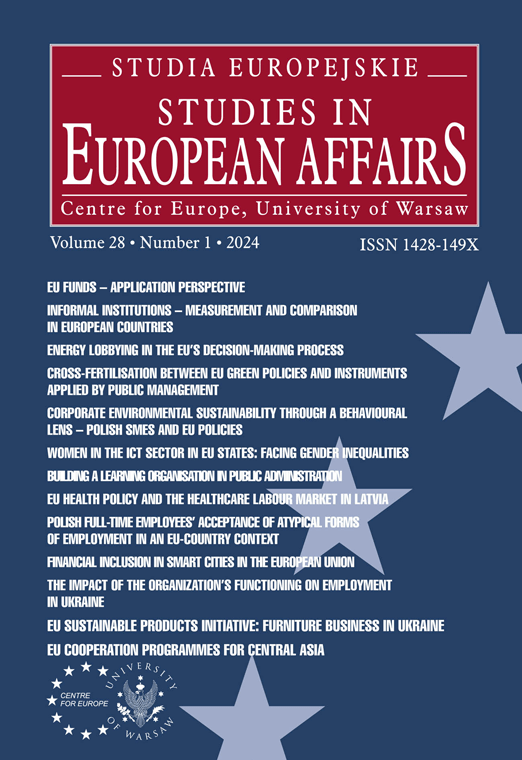Issue: 1/2024
- Volume 28
- Number 1
- 2024
Subscribe NEWSLETTER
Studia Europejskie –
Studies in European Affairs
ISSN: 1428-149X
e-ISSN: 2719-3780
License
Articles published in the journal are under a Creative Commons Attribution – Non Commercial – No Derivatives 4.0 International License
Peer Review Process
Principles of reviewing submitted articles in the CE UW Publishing Programme
The Editorial Team of the CE UW Publishing Programme carries out initial verification of the submitted texts, examining the alignment of the article’s subject matter with the profile of the quarterly and compliance with editorial requirements.
The texts that are approved in this way shall be submitted to be reviewed by two reviewers cooperating with the Editorial Office. The review process preserves the anonymity of both the author and reviewers (double-blind review process). Reviewers cannot be affiliated to the same institution as the author. Reviewers evaluate the text and fill in the review form.
The review has an opinion-forming function, which means that the final decision on accepting the text for printing is made by the Editorial Team.
- Submission of Paper
The corresponding or submitting author submits the paper to the journal by email. - Editorial Office Assessment
The journal checks the paper’s composition and arrangement against the journal’s Author Guidelines to make sure it includes the required sections and stylizations. The quality of the paper is not assessed at this point. - Appraisal by the Editor-in-Chief (EIC)
The EIC checks that the paper is appropriate for the journal and is sufficiently original and interesting. If not, the paper may be rejected without being reviewed any further. - Evaluation of Statistical Editor
The Statistical Editor assesses the quality of research described in the text. - EIC Assigns a Thematic Editor
The EIC appoints thematic editor who handle the peer review. - Invitation to Reviewers
The thematic editor sends invitations to appropriate reviewers. At least two reviewers are required. Reviewers cannot be affiliated to the same institution as the author. - Response to Invitations
Potential reviewers consider the invitation against their own expertise, conflicts of interest and availability. They then accept or decline. If possible, when declining, they might also suggest alternative reviewers. (The reviewer only receives a text. He/she does not receive the author’s name.) - Review is Conducted
The reviewer sets time aside to read the paper several times. The first read is used to form an initial impression of the work. If major problems are found at this stage, the reviewer may feel comfortable rejecting the paper without further work. Otherwise they will read the paper several more times, taking notes so as to build a detailed point-by-point review. Then the reviewer carefully completes the reviewing form and presents it to the journal, with a recommendation to accept or reject it – or else with a request for revision (usually flagged as either major or minor) before it is reconsidered. - Journal Evaluates the Reviews
The thematic editor considers all the returned reviews before making an overall decision. If the reviews differ widely, the editor may invite an additional reviewer so as to get an extra opinion before making a decision. - The Decision is Communicated
The editor sends a decision email to the author including any relevant reviewer comments (the comments are anonymous). - Next Steps
If accepted, the paper is sent to production. If the article is rejected or sent back for either major or minor revision, the thematic editor should include constructive comments from the reviewers to help the author improve the article. At this point, reviewers should also be sent an email or letter letting them know the outcome of their review. If the paper was sent back for revision, the reviewers should expect to receive a new version. However, where only minor changes were requested this follow-up review might be done by the handling editor.
The review process usually lasts up to three months.
The principles of article review are consistent with the guidelines COPE Ethical Guidelines for Peer Reviewers
